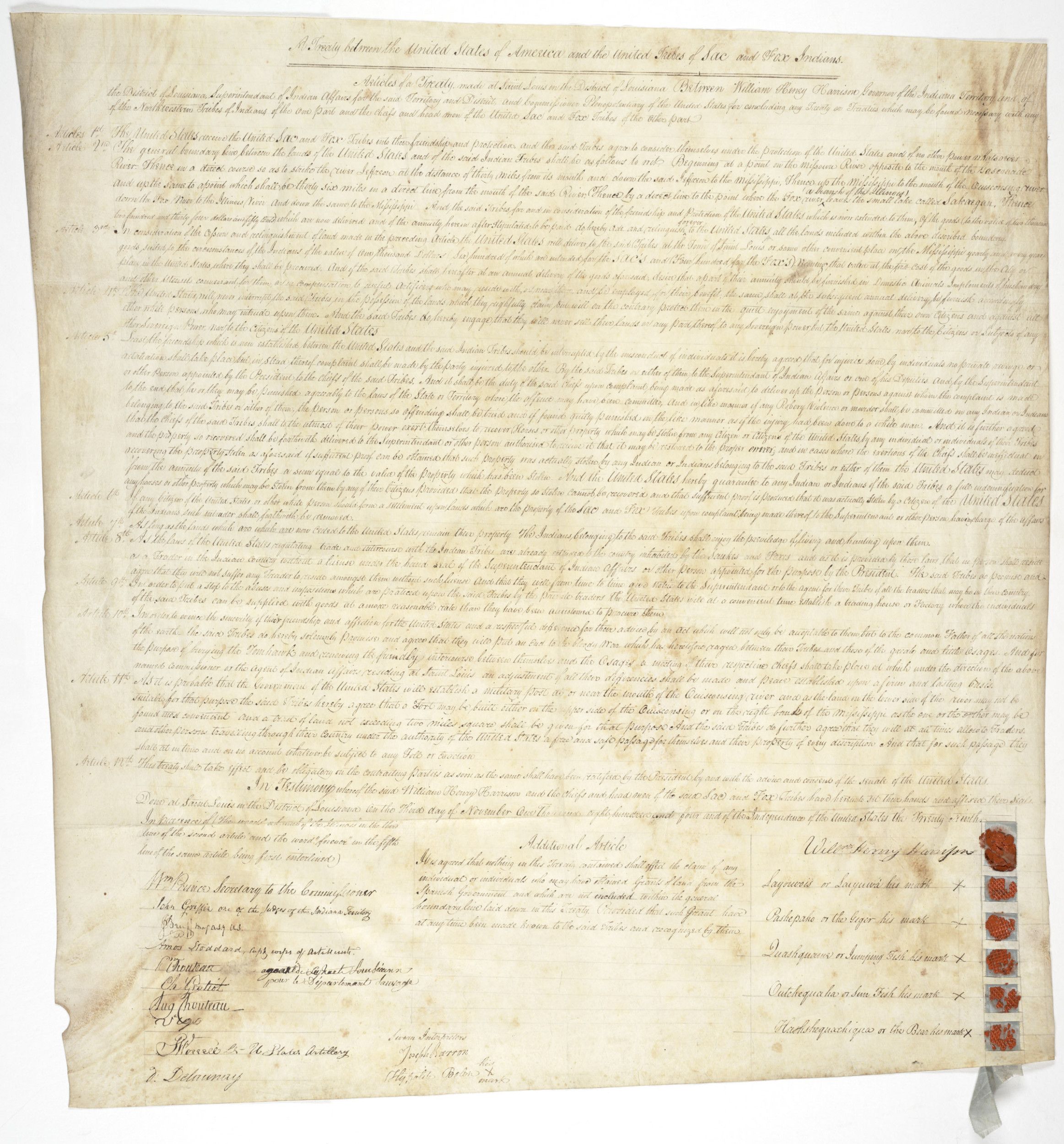Sauk and Fox Treaty
11/3/1804
Add to Favorites:
Add all page(s) of this document to activity:

This handwritten treaty between the U.S. Government and the Sauk (or Sac) and Fox Indians was signed at St. Louis, Missouri, in the District of Louisiana on November 11, 1804. William Henry Harrison was the representative and signer for the United States. It is also called Ratified Indian Treaty #43, 7 STAT 84, or the Treaty of St. Louis.
After the Revolutionary War, the United States had continued the European practice of negotiating treaties with the Native Peoples similarly to how they negotiated with foreign governments. This practice changed gradually over time.
In 1831, the Supreme Court case Cherokee Nation v. Georgia changed the status of Native tribes from "independent, sovereign nations" to "domestic dependent nations." Treaties, however, still followed the pattern of requiring negotiations between the U.S. Government and tribal governments and ratification by Congress. Not all negotiated treaties were ratified.
In 1871, Congress passed the Indian Appropriations Act, which suspended all further treaties with Native governments. After that time, all changes or additions to Native lands or status were conducted by Executive Order, Acts of Congress, and decisions of the Federal Courts. To this day federally recognized American Indian tribes and Alaska Natives retain the right of self-government and usually hold a legal position directly under the Federal Government.
After the Revolutionary War, the United States had continued the European practice of negotiating treaties with the Native Peoples similarly to how they negotiated with foreign governments. This practice changed gradually over time.
In 1831, the Supreme Court case Cherokee Nation v. Georgia changed the status of Native tribes from "independent, sovereign nations" to "domestic dependent nations." Treaties, however, still followed the pattern of requiring negotiations between the U.S. Government and tribal governments and ratification by Congress. Not all negotiated treaties were ratified.
In 1871, Congress passed the Indian Appropriations Act, which suspended all further treaties with Native governments. After that time, all changes or additions to Native lands or status were conducted by Executive Order, Acts of Congress, and decisions of the Federal Courts. To this day federally recognized American Indian tribes and Alaska Natives retain the right of self-government and usually hold a legal position directly under the Federal Government.
This primary source comes from the General Records of the United States Government.
National Archives Identifier: 7891103
Full Citation: Treaty between the United States Government and the Sauk and Fox Indians signed at Saint Louis in the District of Louisiana on November 11, 1804 (Ratified Indian Treaty #43, 7 STAT 84); 11/3/1804; Ratified Indian Treaty 43: Sauk and Fox - St. Louis in the District of Louisiana, November 3, 1804; Indian Treaties, 1722 - 1869; General Records of the United States Government, Record Group 11; National Archives Building, Washington, DC. [Online Version, https://www.docsteach.org/documents/document/sauk-and-fox-treaty, April 18, 2024]Rights: Public Domain, Free of Known Copyright Restrictions. Learn more on our privacy and legal page.



